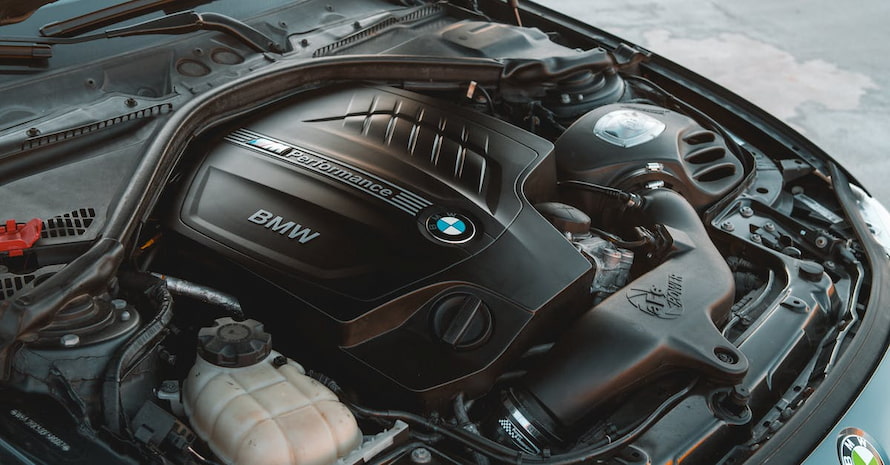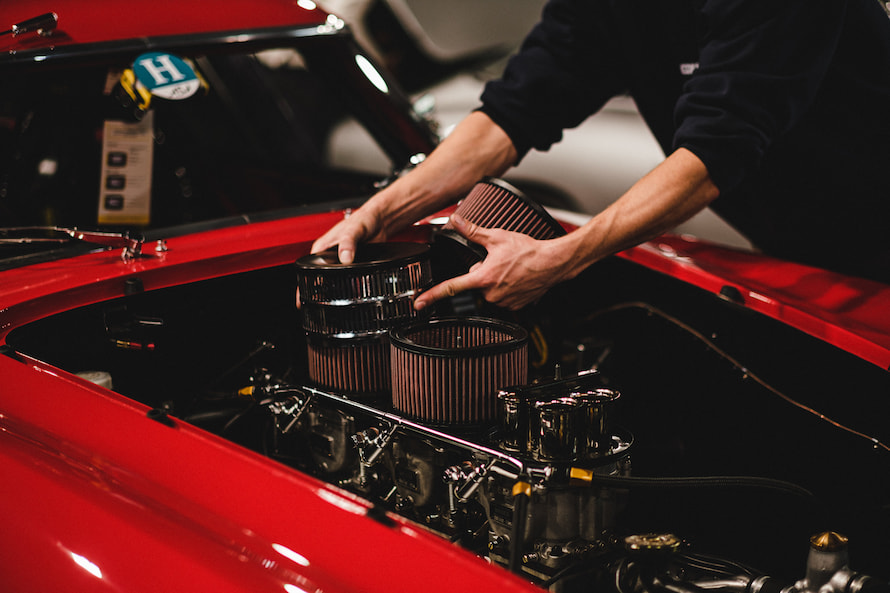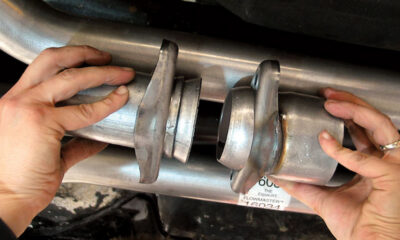Automotive
Unveiling the Power of Cold Air Intakes: Enhancing Your Ride’s Performance
In the world of automotive enthusiasts and performance aficionados, the term “cold air intake” resonates like a symphony of power and efficiency. These unassuming components play a pivotal role in improving your vehicle’s performance and efficiency, delivering a breath of fresh air, quite literally, to your engine. As you embark on a journey to elevate your driving experience, let’s dive into the realm of cold air intakes, understanding their significance, the diverse types available, the allure of aftermarket options over stock counterparts, and how to make an informed choice that aligns perfectly with your vehicle.
What Are Cold Air Intakes?
In the realm of automotive engineering, cold air intakes emerge as a game-changer. As the name implies, cold air intakes are specialized components designed to channel cooler outside air into the engine’s combustion chamber. The fundamental idea behind cold air intakes is rooted in the understanding that cooler air is denser, leading to a more efficient combustion process within the engine.
Vehicles are typically equipped with stock air intake systems that prioritize cost-effectiveness and practicality. However, these stock systems often fall short in delivering optimal performance, especially for those seeking to maximize power, efficiency, and throttle response. This is where aftermarket cold air intakes come into play.

Why Are Cold Air Intakes Important?
To comprehend the importance of cold air intakes, one must understand the intricate dance between air, fuel, and combustion within an engine. In a combustion engine, the combustion process is the heart of power generation. When air and fuel are mixed and ignited, they release energy that propels the vehicle forward. This energy release is determined by factors such as air-fuel ratio, combustion efficiency, and temperature.
Cold air intakes inject a breath of cold, dense air into this equation. Cooler air is denser, containing more oxygen molecules. This oxygen-rich air leads to a more complete combustion process, which translates to increased power output and enhanced fuel efficiency. Furthermore, cooler air helps prevent detonation, also known as knocking, which can cause engine damage over time.

Exploring the Different Types of Cold Air Intakes
Cold air intakes come in a variety of designs, each with its own set of advantages and considerations. Some common types include:
- Traditional Cold Air Intakes: These feature a basic design with an open-element air filter placed in a shielded housing. They provide a simple and cost-effective upgrade from stock systems, directing cooler air into the engine.
- Ram Air Intakes: These intakes are designed to capture and force air into the engine under the vehicle’s movement. They leverage the vehicle’s forward momentum to deliver high-speed, pressurized air to the engine, boosting performance at higher speeds.
- Short Ram Intakes: Short ram intakes are characterized by their shorter tubing, providing a more direct path for air to enter the engine. While they may not provide the same cooling effect as other designs, they can improve throttle response and are easier to install.
- Cold Air Intake with Heat Shield: This design incorporates a heat shield around the air filter, isolating it from the heat generated by the engine. By preventing the ingestion of hot air, these intakes maintain the desired cooler airflow.

Why Choose Aftermarket Cold Air Intakes?
The automotive parts store often houses a plethora of aftermarket options that outshine their stock counterparts in multiple ways. While stock air intake systems are designed with a one-size-fits-all approach to cater to various vehicles and driving conditions, aftermarket cold air intakes are tailored to specific vehicle models and engineered with performance enhancement in mind.
- Enhanced Performance: Aftermarket cold air intakes are meticulously crafted to optimize airflow, minimize restrictions, and maximize the intake of cold, oxygen-rich air. This results in improved horsepower, torque, and throttle response, transforming your vehicle’s driving experience.
- Quality Materials: Manufacturers of aftermarket cold air intakes often utilize premium materials such as high-quality plastics, aluminium, or carbon fibre. These materials are not only durable but also contribute to reducing heat transfer from the engine bay to the intake, ensuring a consistent flow of cold air.
- Customization: Enthusiasts love the ability to customize their vehicles, and aftermarket cold air intakes offer a chance to do just that. From the design and colour of the intake tube to the type of air filter used, these options allow drivers to tailor their upgrades to match their personal style.
- Sound and Aesthetics: Some aftermarket intakes are designed to produce a more aggressive engine sound, adding an auditory dimension to the driving experience. Additionally, the sleek and attractive appearance of aftermarket intakes can enhance the engine bay’s aesthetics.

Selecting the Perfect Aftermarket Cold Air Intake
The process of choosing the right aftermarket cold air intake for your vehicle requires careful consideration. Here are some steps to guide you through this selection process:
- Research: Begin by researching the available options for your specific vehicle model. Consider factors such as compatibility, design, and user reviews.
- Performance Goals: Define your performance goals. Are you seeking increased horsepower, improved fuel efficiency, or enhanced throttle response? Different cold air intakes offer varying degrees of performance improvement.
- Material and Build Quality: Pay attention to the materials used in the intake’s construction. High-quality materials are essential for durability and preventing heat transfer.
- Installation: Evaluate the ease of installation. Some aftermarket cold air intakes are designed for DIY installation, while others might require professional help.
- Maintenance: Consider the maintenance requirements of the chosen intake. Some air filters are washable and reusable, reducing long-term costs.
- Warranty: Check if the manufacturer offers a warranty. A warranty reflects the manufacturer’s confidence in the product’s quality.
- Tuning: Some aftermarket intakes may require an ECU (engine control unit) tune to fully harness their performance benefits. Ensure that you’re prepared for any necessary tuning adjustments.

Conclusion: Elevating Your Ride with Cold Air Intakes
In the realm of automotive performance upgrades, cold air intakes stand as a symbol of innovation and power. Their ability to optimize the combustion process through the intake of cooler, denser air brings forth enhanced performance, improved fuel efficiency, and an overall exhilarating driving experience. While stock air intake systems may be suitable for daily commuting, aftermarket cold air intakes cater to the desires of enthusiasts who seek to unlock their vehicle’s true potential.
As you embark on your journey to enhance your ride, remember that the aisles of the automotive parts store hold treasures waiting to be unveiled. With careful research, a clear understanding of your performance goals, and an appreciation for craftsmanship, you can select the perfect aftermarket cold air intake that aligns with your vehicle’s DNA and transforms your driving moments into an adventure of power and precision.












